Competition Nutrition in Triathlon
Part 1 Nutrition before the Competition
In this article, you will learn the most important nutrition tips for your triathlon competition!
The combination of three different endurance disciplines (swimming, cycling & running) and a competition duration that can vary from 50 minutes (sprint distance) to 14 hours (Ironman) presents athletes and nutrition coaches with particular challenges.
Regardless of the distance, dehydration, depleted carbohydrate stores and gastrointestinal complaints are the most important limiting nutritional factors that determine success or failure in triathlon (
1,2,3
).
Competition nutrition therefore requires a targeted and tested plan that takes these factors into account individually.
Nutrition in the Days before the Competition
Carb Loading
According to the motto “eat pasta to run faster“, a significant increase in the amount of carbohydrates and a reduction in training volume in the days before the competition should maximize carbohydrate stores (supercompensation) and thus improve endurance performance.
- But what does that look like exactly?
- What are the physiological backgrounds?
- When is it useful to use?
Carbohydrates are the preferred source of energy for our muscles, as they provide us with energy faster and more efficiently than fats. During intensive endurance exercise, the glycogen stores are mostly empty after 75-90 minutes (
4
). Although new carbohydrates can be absorbed during exercise, it is more effective to obtain energy directly from the carbohydrate stores in the muscles – the glycogen stores. The aim of nutritional strategies is therefore to delay the time until the muscle glycogen stores are depleted and thus achieve an increase in performance.
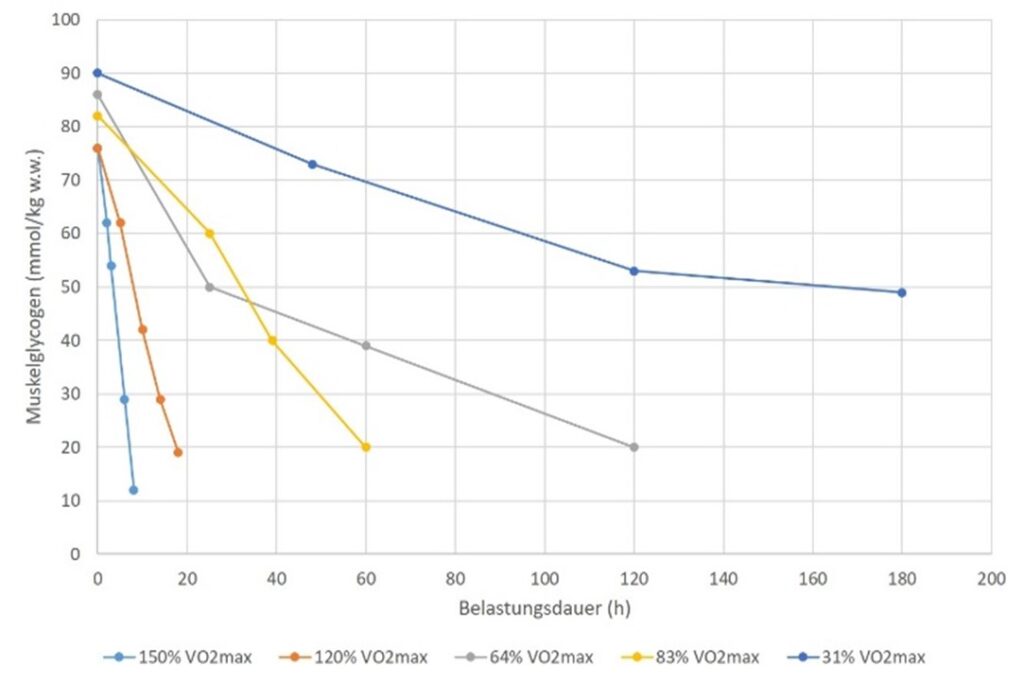
Influence of sport duration and intensity on glycogen store filling level (4)
Carbohydrates are stored in the liver & muscles in the form of glycogen:
- Liver (approx. 100g): Serves to regulate blood sugar levels.
- Muscles (400-500g): Used to generate energy during muscular stress.
Consider your glycogen stores as your fuel. You are about to embark on a long journey and make sure you have enough fuel in the tank. The more fuel you have, the longer you can go until the next gas station.
How is a Supercompensation of Glycogen Stores Achieved?
For a long time, it was assumed that glycogen stores had to be emptied first, through a combination of a low-carb diet with intensive endurance training. Because some older studies have shown that this protocol (also called ‘Saltins diet’) can actually charge the glycogen stores above the normal level – this phenomenon is called supercompensation (
5
). However, this strategy is very strenuous and often leads to severe subjective exhaustion and poor sleep for the athletes, which is of course anything but ideal so shortly before the competition.
Accordingly, the research results of Bussau and colleagues (2001) were positively received, who found that in trained endurance athletes, emptying the glycogen stores is not a must for supercompensation. Because: by increasing carbohydrate intake by 20 – 25% for 1.5 – 3 days, while reducing the training volume (also called “taper“), we can raise the glycogen stores to the same level as with the old ‘Saltins diet‘ (
6
).
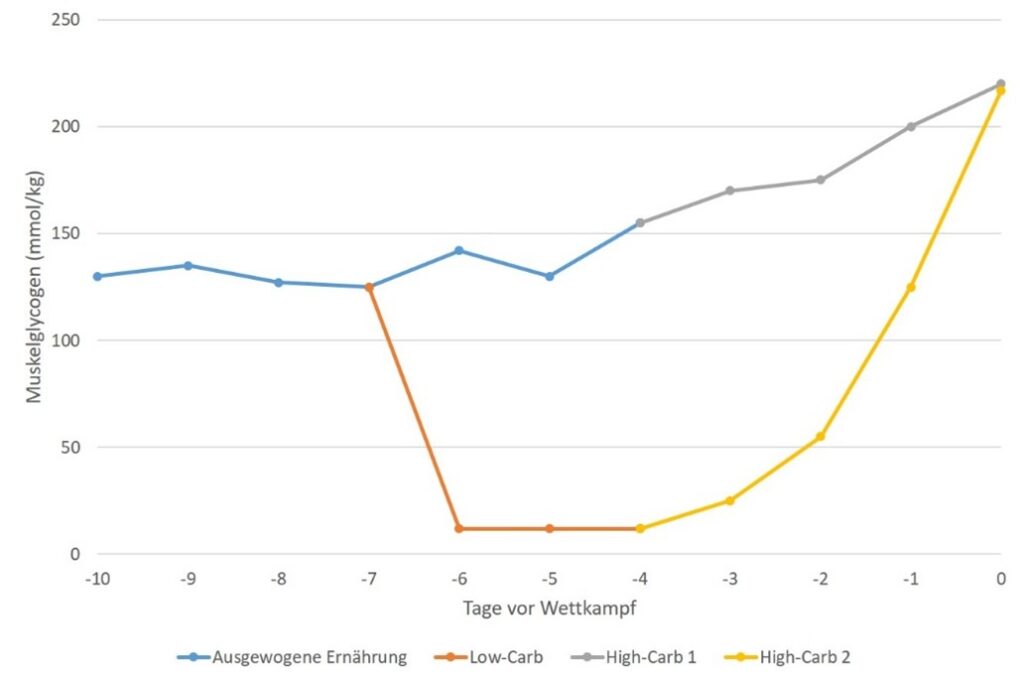
Supercompensation of glycogen stores: with and without low-carb (
6
)
In the meantime, you would simply increase your carb intake by about 20% in the 2 – 3 days before the competition and reduce your training volume at the same time, as this much more practical strategy leads to almost identical results – only that it is also much more pleasant.
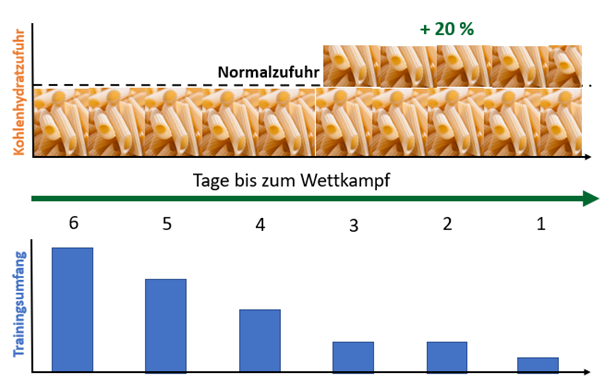
Who is Carb Loading Suitable for?
For anyone who wants to maximize their performance and participate in an endurance competition with a duration of over 90 minutes. However, there are still a few aspects to consider here. Because: anyone who simply tries to eat more of their usual carb sources will quickly realize that this is a major challenge for the gastrointestinal tract.
Accordingly, the following aspects and tips should be taken into account:
Track your carbohydrate intake with an app or create a nutrition plan
- Many overestimate the amount of carbohydrates they consume and only reach half of the recommended intake. Those who only pay attention to their body feeling will soon get the signals to stop eating.
Have a plan that is individually tailored to you
- Different performance levels also mean different training loads and correspond to adapted nutritional strategies
- Each body reacts slightly differently to an increased carbohydrate intake, in some cases a sensitive stomach and digestive problems have to be taken into account
- Every athlete has a different everyday life, and accordingly individual solutions are needed in practice
Low in fiber, low in fat & moderate in protein
- Pay attention to low-fiber and easily digestible foods
- This reduces the likelihood of avoiding gastrointestinal discomfort
- It is also easier to consume such a high amount of carbohydrates, because these foods are less filling
- As a rule of thumb: consume between 10 and 20g of fiber per day during the carb loading phase
Example of fiber reduction:
- Wholemeal bread > White bread
- Oatmeal > Crunchy muesli
- Nuts and kernels only in small quantities
- Potatoes instead of rice
- Juice instead of large amounts of fruit
- Reduce the amount of vegetables to 100 to 150g
So that the total calories do not go to extremes, you have to save on fat and protein. Because 600g of carbohydrates already have 2400 kcal. Therefore, try to integrate lean protein sources, as well as strongly reduce or avoid fiber-rich foods such as fruit, vegetables, legumes and whole grain products. In our show picture below you will find an example plan created by us on how to implement the tips mentioned in practice.
A negative example for dinner would be a pizza. Although it contains a few grams of carbs, it also contains a lot of fat and protein and therefore has a high calorie content!
Don’t be afraid of products with a high sugar content and in liquid form, they can make your life easier in this case!
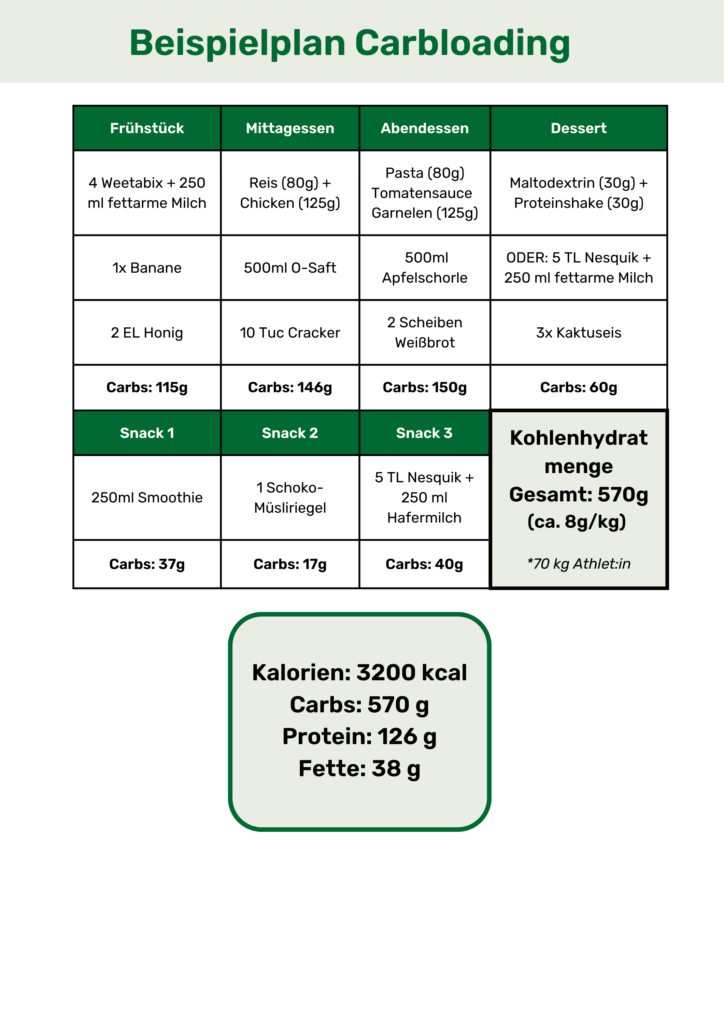
Nutrition on the Day of the Competition
How Do I Deal with Nervousness and Digestive Problems?
A certain amount of nervousness before a competition is normal. However, if you are very nervous, it is worth reducing or avoiding caffeine consumption altogether. Digestive problems often go hand in hand with nervousness. The stimulating effect of caffeine can amplify this feeling, and accordingly also increase the risk of digestive problems.
These tips will help you
reduce the risk of digestive problems on the day of the competition:
- No experiments: only eat things that you know you can tolerate
- Consume little fiber & fats
- Large amounts of fructose can also promote digestive problems
- Certain foods with a high proportion of fermented carbohydrates (FODMAP content) can cause digestive problems
- Make sure you drink enough fluids
- Avoid painkillers such as ibuprofen
- Plan your food in advance and prepare it the day before if necessary, or check what is available at the competition venue
- Plan enough digestion time!
3-4 Hours before the Competition
Depending on the start time, the last larger meal should be taken 3-4 hours before the start. This should also be high in carbohydrates (100-250g), low in fiber, low in fat and contain only a moderate amount of protein. This high amount of carbs not only serves as a last ‘top-up’ for the glycogen stores in the muscles, it also serves to replenish the liver glycogen, which is largely used up overnight. And full glycogen stores in the liver are important for maintaining an optimal blood sugar level and energy supply to the central nervous system (
7
).
<60 Minutes before the Competition
If the distance to the last meal is greater, it is worth taking another small, easily digestible carbohydrate snack. Suitable foods include a ripe banana, 1 large handful of raisins/cranberries, 3 rice cakes with honey, a squeeze, a carbohydrate or 250 – 300 ml sports drink. This is also the time to take the first dose of caffeine (2-3 mg/kg).
If the start is very early, it is not always possible to eat 3 – 4 hours beforehand. In this case, a larger snack consisting of liquid calories and easily digestible carbs should be consumed about 2 hours before the start. For example, you could eat ~4 toasts with jam or honey and drink 1 glass of juice. And then take another gel with carbohydrates or a 250 – 300 ml sports drink 20 – 30 minutes before the start.
No matter which variant you choose in the end: the most important thing is that you have tested this strategy 1:1 in training beforehand. This is the only way you can be sure that the selected method really works for you.
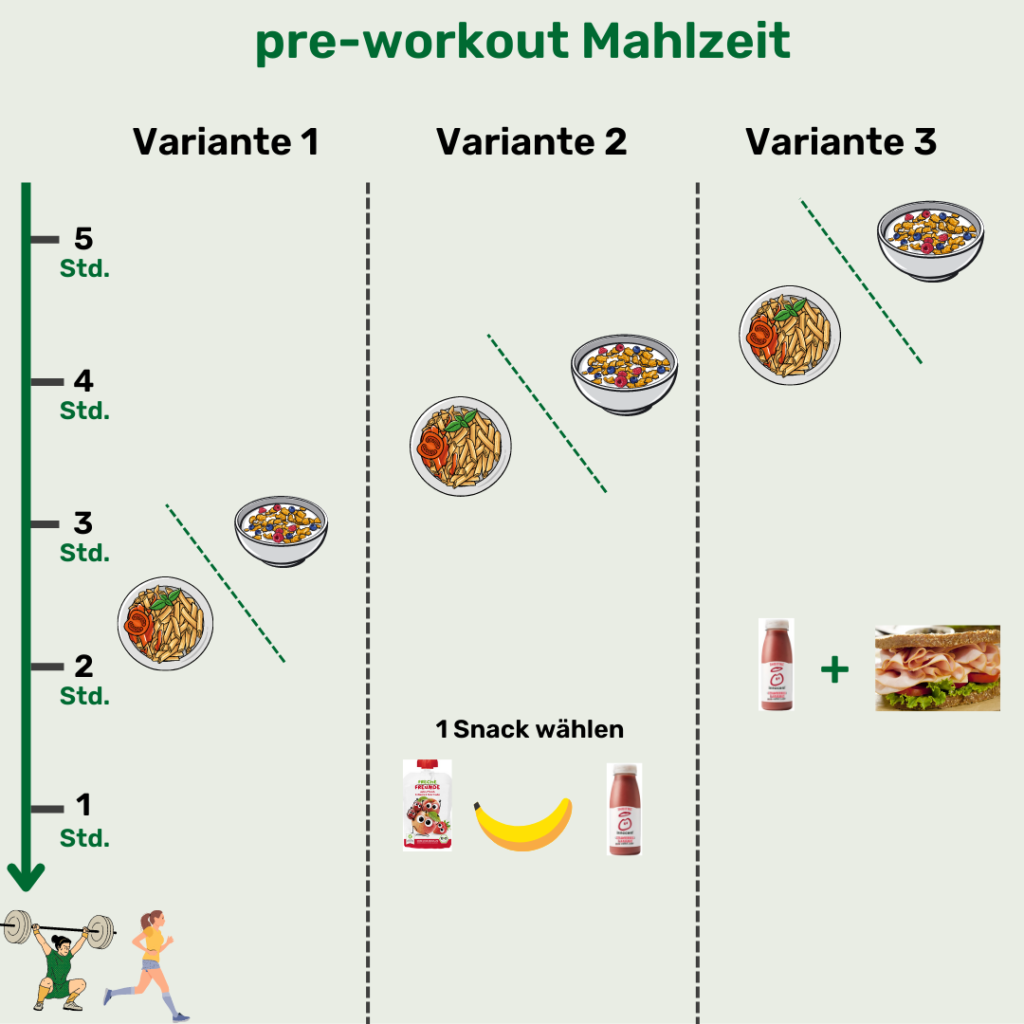
Hydration
Another important component of nutritional strategies before the start is ensuring optimal hydration.
Because: if you don’t start the race optimally hydrated, then it is almost impossible to compensate for this with a sufficiently high fluid intake during the race – at least for the longer race distances.
- Drink 5 – 7ml of fluid per kg of body weight immediately after getting up. Water, tea, juices or sports drinks are the most suitable drinks here (
8
) - After that, only small to moderate amounts of fluid are actually needed to maintain optimal hydration
- A lot doesn’t necessarily help a lot here, and only leads to a high urge to urinate, which is not ideal shortly before the start
- Therefore, only drink another 200 – 300 ml in the last 1 – 2 hours – based on your own feeling of thirst – and check the color of your urine to draw conclusions about your hydration status (
9
,
10
) - If your urine color is light, you don’t need to drink anything. If it is yellow, then drink another 200 – 300 ml
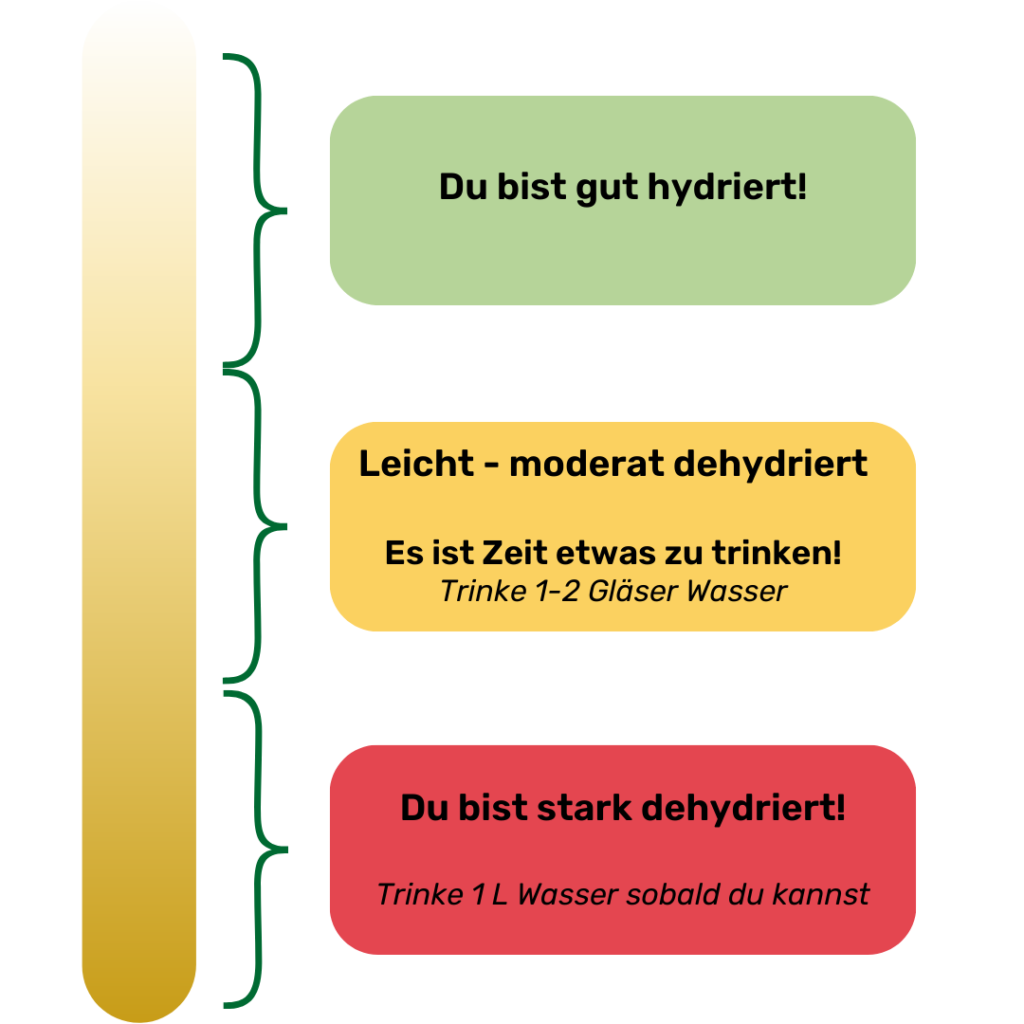
Summary:
- The time before the competition can be roughly divided into the 3 – 4 days before the competition (carb loading) and the nutritional strategies on the morning of the competition itself
- When carb loading, it is important to increase carb intake by approx. 20 – 25 % and at the same time drastically reduce the training volume
- In order to avoid a strong feeling of fullness and gastrointestinal problems, the focus should be on easily digestible carbohydrates and the intake of fiber and fats should be reduced
- On the morning of the competition, the focus is on an adequate intake of carbs and fluids, whereby the exact amounts depend heavily on the available time window between breakfast and the start of the race
- The most important rule, however, is to develop an individual strategy and test it in training beforehand
We Wish You Every Success in your Races
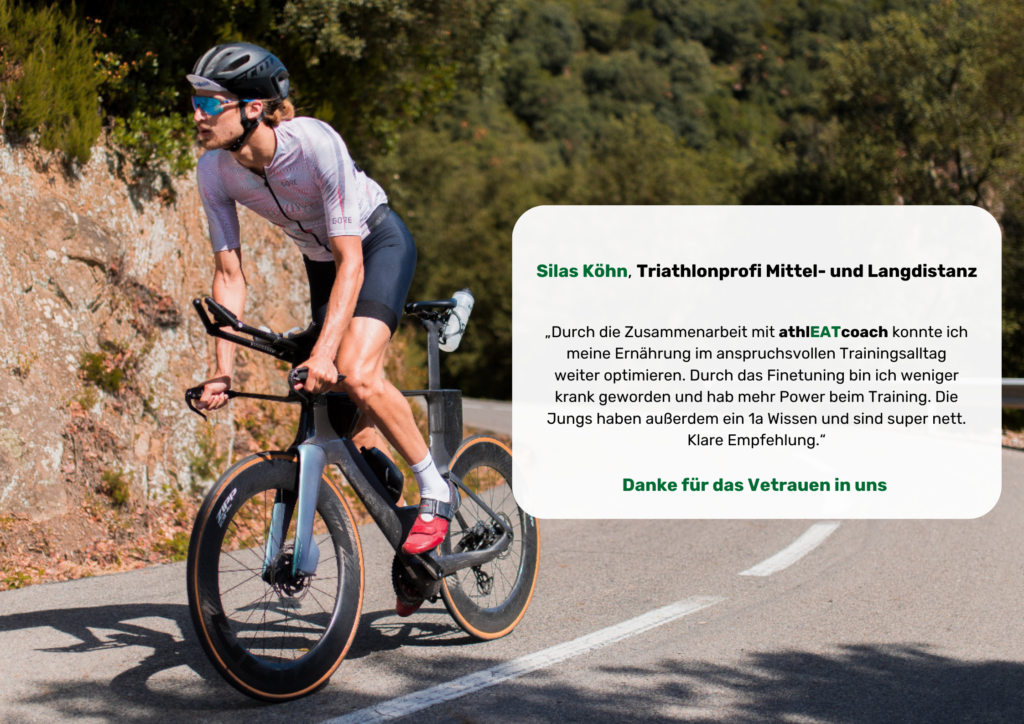
Would you like to be coached professionally? Then you can find more information about our coaching here. We offer all interested parties a free information call.

